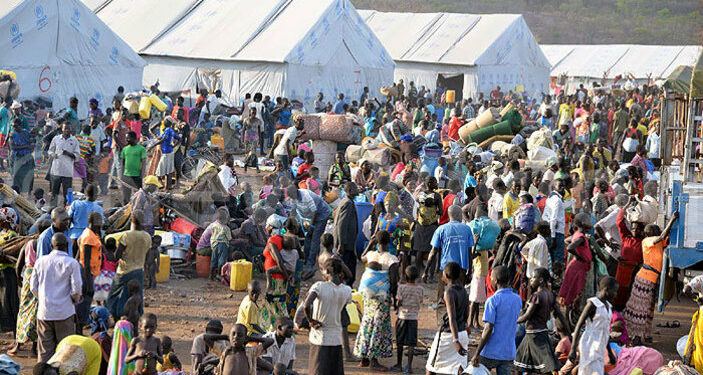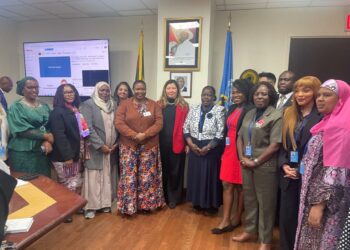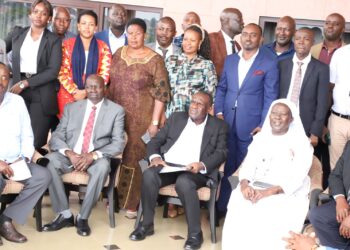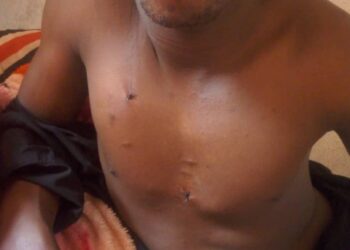Currently, in Uganda’s refugee settlements, children and adolescents face not only the challenges of displacement but also the harsh reality of violence.
A recent survey dubbed Violence Against Children and Youth Survey (VACS) in humanitarian settings by the Baobab Research Program Consortium (RPC) launched a few weeks ago has shed light on the scale of this issue, revealing alarming rates of sexual, physical, and emotional abuse among young people.
As the nation grapples with this crisis, a coordinated response is underway, led by the Ministry of Health and other key stakeholders.
The survey, which was conducted in 13 refugee settlements across Uganda, found that nearly 50 percent of children experienced violence before the age of 18, with girls disproportionately affected by sexual abuse. Boys, meanwhile, were more likely to experience physical violence. These findings have sparked urgent calls for action from health officials, community leaders, and international partners.
Agnes Sebowa, Senior Public Health Specialist at the Ministry of Health, is one of those at the forefront of efforts to address this crisis. Reflecting on the report’s findings during the launch, Sebowa informed Watchdog Uganda that much emphasis must be put on the establishment of community mobilization mechanisms in these settlements in line with tackling violence.
“When you look at the findings, it’s clear that some survivors had access to services and information, but many did not. We’re focusing on strengthening community organization and raising awareness to ensure that everyone parents, children, and leaders knows how to prevent and respond to violence,” Sebowa said.
For many children, the first instance of violence occurs after arriving in the refugee settlements. Sebowa believes this can be changed by empowering communities. “We are engaging cultural leaders, community heads, and even children themselves in discussions about violence. These conversations are crucial for breaking the cycle of abuse and ensuring survivors get the help they need.”
But awareness is just one piece of the puzzle. Strengthening health service delivery is another key focus for Sebowa and her team. She said the Ministry of Health is working to ensure that health workers, particularly those in refugee settlements, are equipped to identify and manage cases of violence. “We are prioritizing the capacity of our health service providers because, for us, health workers are often the last line of defense. We see these cases in the facilities, so we must be ready to manage them effectively,” Sebowa said.
One of the most significant challenges is the lack of data. According to Sebowa, data is the foundation of any meaningful intervention. “Without data, you can’t have evidence-based programs,” she explained. “We’re focusing on improving our management information systems to capture the right indicators. This way, we can monitor and guide our efforts more effectively. And I’m glad that we have now this report in place and we are going to extensively use it.”
The stakes are high. The RPC survey found that while 73% of adolescents knew where to seek help, only 17% disclosed their experiences, and an even smaller percentage received the help they needed. The Ministry of Health is responding by distributing more information to vulnerable communities and ensuring that resources are readily available to those who need them.
Sebowa is particularly concerned about the ripple effect violence has on education. “We’ve seen that violence disrupts education for many children. Some miss school for months at a time due to the trauma they’ve experienced. Education is key to breaking the cycle of violence, so we must keep these kids in school. As a ministry we are tackling this issue both in the settlements and in other places because they are the same issues facing children across,” she noted.
In refugee settlements, the Ministry is also prioritizing prevention efforts through multi-level coordination. “At the national level, we have working groups addressing adolescent and school violence. At the sub-national level, dispute committees monitor and evaluate programs aimed at preventing violence. Coordination is key to ensuring that every child in Uganda is safe,” Sebowa explained.
One of the Ministry’s most innovative strategies is its investment in community-led education. Working with cultural and local leaders, the Ministry has rolled out educational programs designed to empower families with knowledge about the dangers of violence and how to prevent it. “We’ve involved everyone in the community, from parents to cultural leaders, to raise awareness. It’s important that children understand their rights and know that help is available,” Sebowa said.
Yet, despite these efforts, the challenge remains vast. For every child who receives help, there are many more who suffer in silence. Sebowa remains determined to change this: “Violence is a cycle, and if it’s not addressed, it will continue to affect generations of children. But with stronger community mobilization, better services, and more data-driven programs, we can make a real difference.”
In line with the ministry’s approach Dr. Gloria Seruwagi one of the researchers from the Baobab Research Program Consortium and the Population Council added that since most perpetrators rely on the fact that victims will stay silent, the element of empowering victims to speak out is a fundamental key in the struggle to curb these violences.
However, she stressed that there is an urgency for the ministry to react because people living in these settlements face many of these challenges. “We’ve realized that the boy child is missing. Also, Refugee populations are very vulnerable compared to normal populations.”
This first-ever VACS survey in a refugee setting conducted in 2022 serves as a wake-up call for both national and international stakeholders. It stresses the need to strengthen policies and programs aimed at safeguarding children in humanitarian contexts, ensuring their well-being and future success.
Especially in Uganda one of the top refugee-hosting countries in the world where almost 50% of refugees in Uganda are located in the Bidi Bidi, Pagirinya, and Rhino refugee settlement camps, located in the northwest region of the country. Additionally, South Sudan accounts for 62 percent of refugees in Uganda, while the Democratic Republic of the Congo accounts for 29 percent.
Do you have a story in your community or an opinion to share with us: Email us at editorial@watchdoguganda.com













